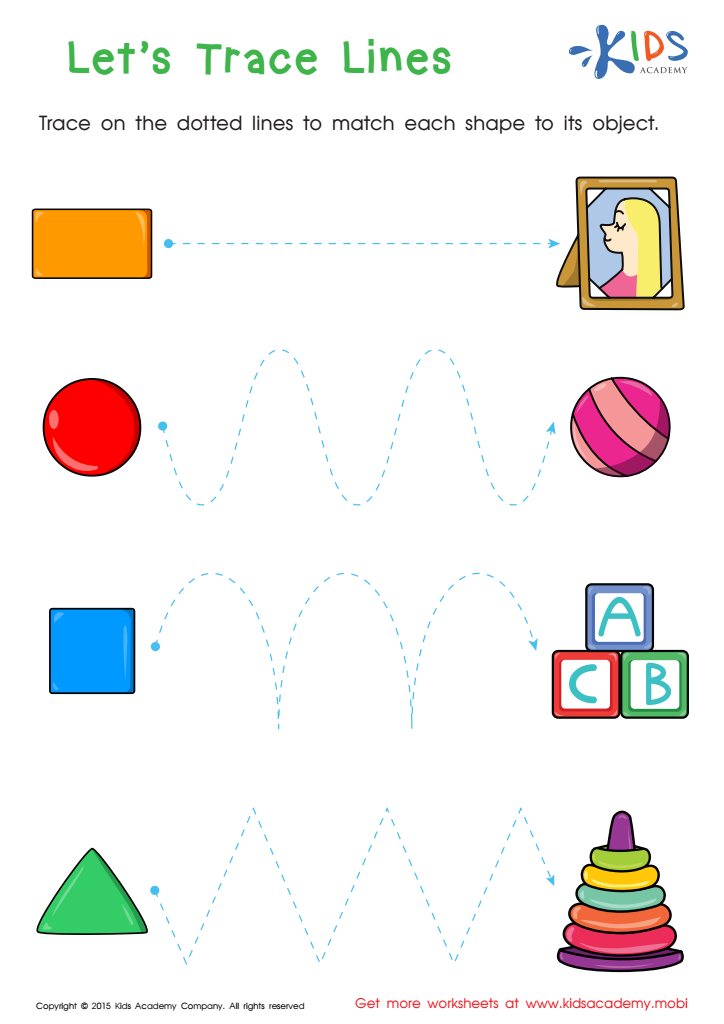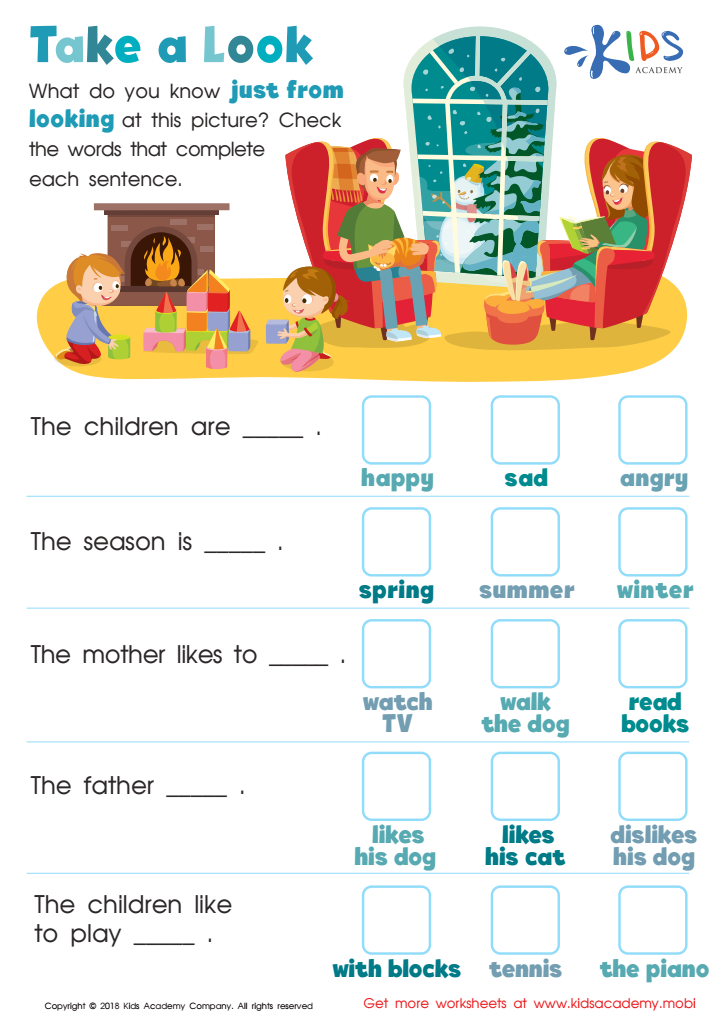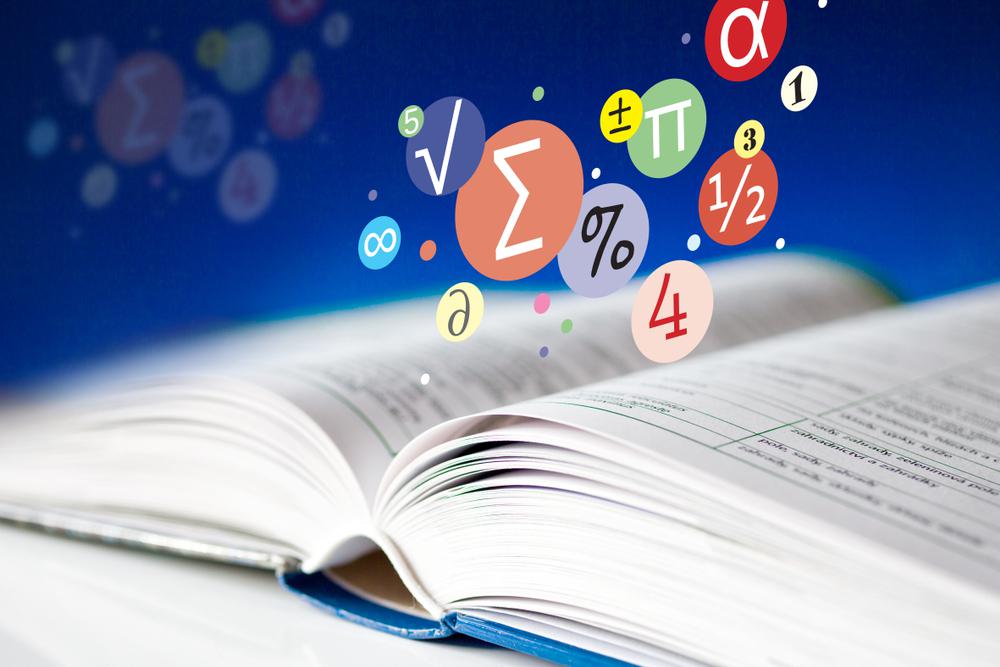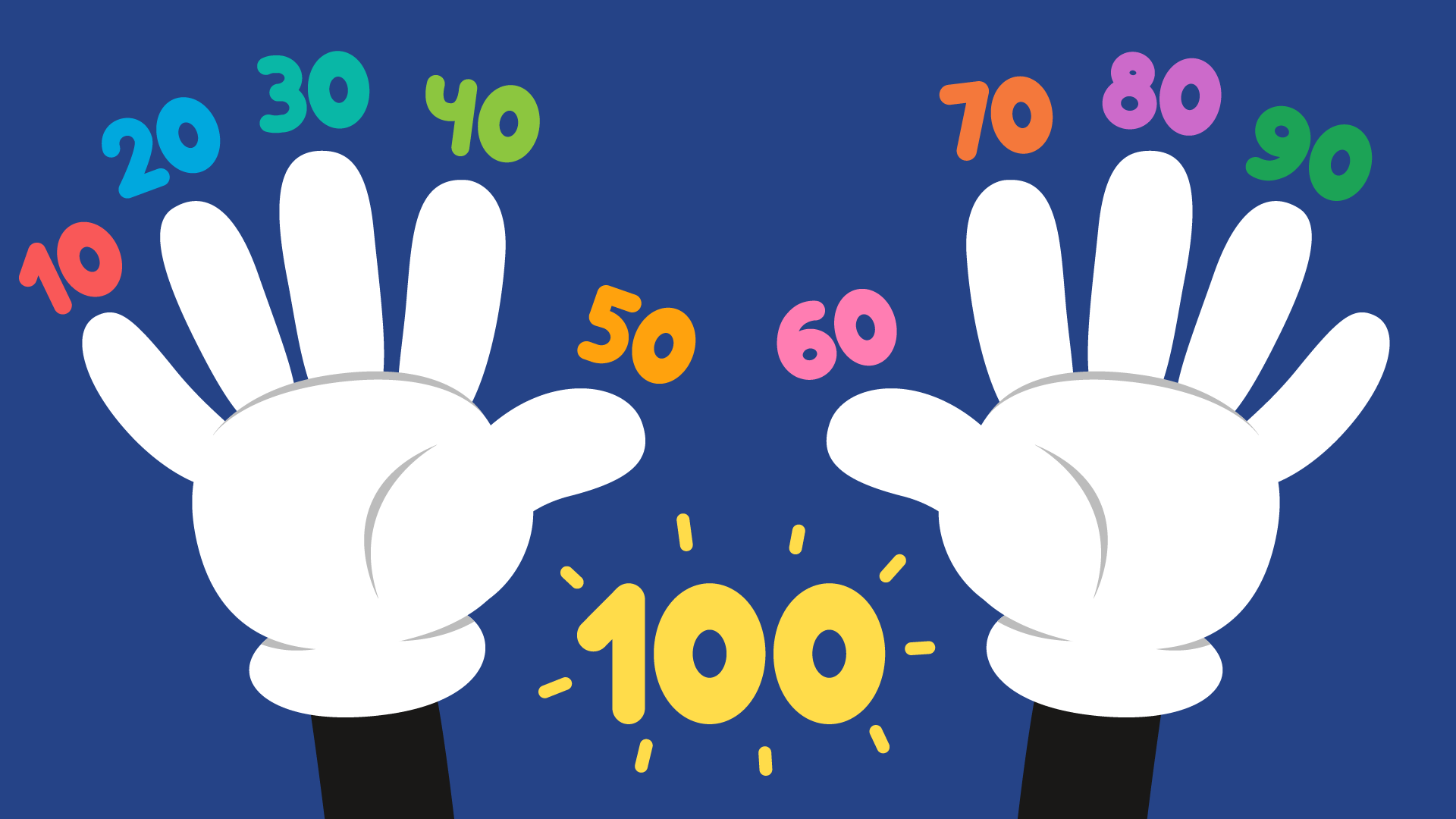Shape Recognition Normal Reading Worksheets for Ages 3-7
3 filtered results
-
From - To
Our engaging Shape Recognition Normal Reading Worksheets for ages 3-7 are expertly crafted to strengthen foundational reading and shape identification skills. These vibrant, educational worksheets integrate fun activities with essential learning, helping young minds recognize and differentiate various shapes while enhancing reading fluency. Perfect for preschoolers and early elementary students, our printable resources encourage interactive learning and support the development of critical thinking and fine motor skills. Ideal for both classroom and home use, these worksheets make learning seamless and enjoyable, setting the stage for academic success and fostering lifelong learning habits. Explore our collection today!


First Words: What Doesn't Belong Worksheet


First Words: Let's Trace Lines Worksheet


Take a Look - Part 1 Worksheet
Shape recognition and early reading skills are fundamental components of a child's cognitive development and academic success, particularly between the ages of 3-7. During this crucial period, children are in their most formative years and rapidly acquiring new skills.
Shape recognition is a key precursor to many academic skills, especially in mathematics and literacy. It helps children understand and organize visual information, which is vital for letter recognition and early reading. Recognizing shapes enhances children’s spatial perception and problem-solving abilities, allowing them to better understand the concepts of geometry and numerical systems as they advance in their education.
Normal reading skills establish the foundation for a child's language development, comprehension, and communication abilities. Early exposure to reading builds vocabulary, increases attention span, and stimulates imagination and cognitive functions. Reading to children fosters a love for books and learning, promoting literacy from a young age and ensuring children are prepared for more complex tasks as they grow.
For these reasons, parents and teachers play a significant role in nurturing shape recognition and early reading skills. Engaging children with educational activities, puzzles, books, and daily reading routines can lead to enriched intellectual growth and set the stage for lifelong learning and academic excellence.
 Assign to My Students
Assign to My Students



















